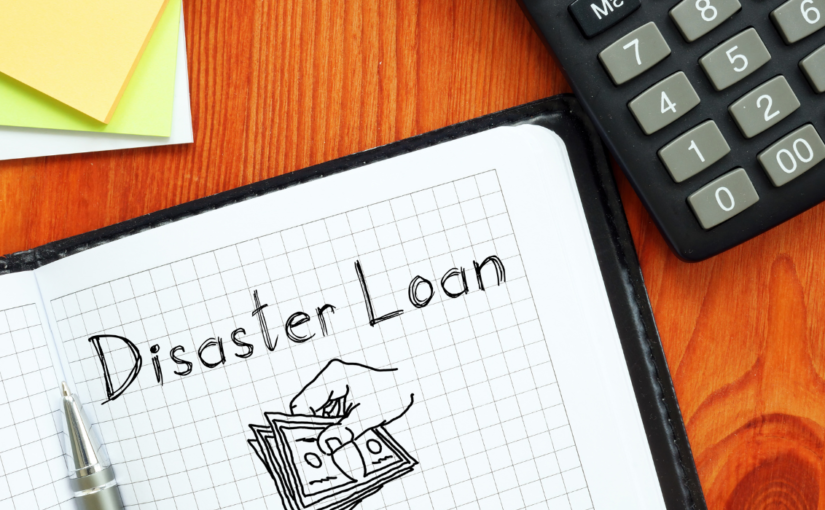back
SBA Disaster Loans: What They Are and How To Apply
04-2023

Disaster loans from the Small Business Administration (SBA) are low-interest loans given by the government to companies impacted by calamities like earthquakes, hurricanes, and floods. These loans can assist companies in repairing the harm caused by these catastrophes and resuming operations.
We will go through the fundamentals of SBA disaster loans in this blog article, including what they are, how they operate, and how to apply.
What are SBA Disaster Loans?
Small Business Administration (SBA) disaster loans are low-interest loans given to companies impacted by natural disasters. These loans can be used to pay for property damage, inventory losses, and company interruptions brought on by natural catastrophes. The loans are intended to aid companies in repairing the harm done by the catastrophe and starting up again.
Small enterprises, nonprofits, and homeowners who have sustained losses as a result of a declared catastrophe are eligible for SBA disaster loans. The loans can be used to pay for operating costs while the company is rebuilding from the disaster as well as the repair or replacement of damaged inventory, equipment, or property.
How do SBA Disaster Loans Work?
A low interest rate of 2.88% for small firms and 2% for nonprofit organizations is charged on SBA disaster loans at the moment. The loans are reasonable for businesses attempting to recover from a tragedy because of their long payback terms, which may be up to 30 years.
The size of the loan that a company is eligible for depends on how much damage the tragedy caused. Disaster loans for small enterprises are limited to $2 million, while disaster assistance for nonprofits is also limited to $2 million.
How to Qualify for SBA Loans for Disasters
Businesses must register with the Federal Disaster Management Agency (FEMA) and submit a disaster aid application before they may apply for an SBA disaster loan. Following these steps, firms can qualify for an SBA disaster loan after a disaster has been declared:
Step 1: Gather the Necessary Information
Businesses should compile the appropriate data before requesting an SBA disaster loan, including:
- Business tax returns for the last three years
- Personal tax returns for the last three years
- A current year-to-date profit and loss statement
- A current year-to-date balance sheet
- A list of all owners with 20% or more ownership in the business
- A list of all affiliates of the business
- A copy of the business’s most recent federal income tax return
- A copy of the business’s most recent financial statementsA schedule of liabilities
- A copy of the business’s lease or mortgage agreement
- A copy of the business’s insurance policy
- A completed SBA loan application form
Step 2: Complete the SBA Loan Application Form
Businesses can fill out the SBA loan application form, which is accessible on the SBA website, once they have acquired all the required data. Businesses must include comprehensive details regarding the disaster’s damage, as well as information about their financial status, on the application form.
Step 3: Submit the Application
Once the application is finished, companies can send it to the SBA Disaster Assistance Processing and Disbursement Center or submit it online through the SBA’s Disaster Loan Assistance website.
Step 4: Await a Decision
After a few weeks of filing the application, firms will hear from the SBA. Businesses will receive the money within a few days if the loan is granted. Businesses may file an appeal or ask for other types of disaster aid if the loan request is denied.
For small businesses and non-profit organizations who have sustained losses as a result of natural catastrophes, SBA disaster loans can be a useful resource. These loans offer long-term, low-interest financing that can aid in the recovery and resuscitation of businesses. However it’s crucial to keep in mind that not all applications are accepted, and the process can take some time.
It’s crucial to move promptly and start the application procedure as soon as you can if your company has experienced damages as a consequence of a natural disaster. You can improve your chances of being accepted for an SBA disaster loan by compiling the required information and completing the SBA loan application form.
Businesses may also be eligible for grants or loans from local or state governments in addition to SBA catastrophe loans when faced with a disaster. It’s crucial to weigh your alternatives and choose the best course of action for your company.
Finally, SBA disaster loans are an important resource for companies trying to recover from natural disasters. You can improve your chances of receiving approval for an SBA catastrophe loan and restart your business by following the instructions provided in this blog post.
F2H Capital Group is a debt advisory firm specializing in negotiating the best terms for your commercial real estate projects. The company offers a range of financial products and services, including fixed loans, bridge loans, and construction loans across all asset types. Please contact us for any of your financing needs.

